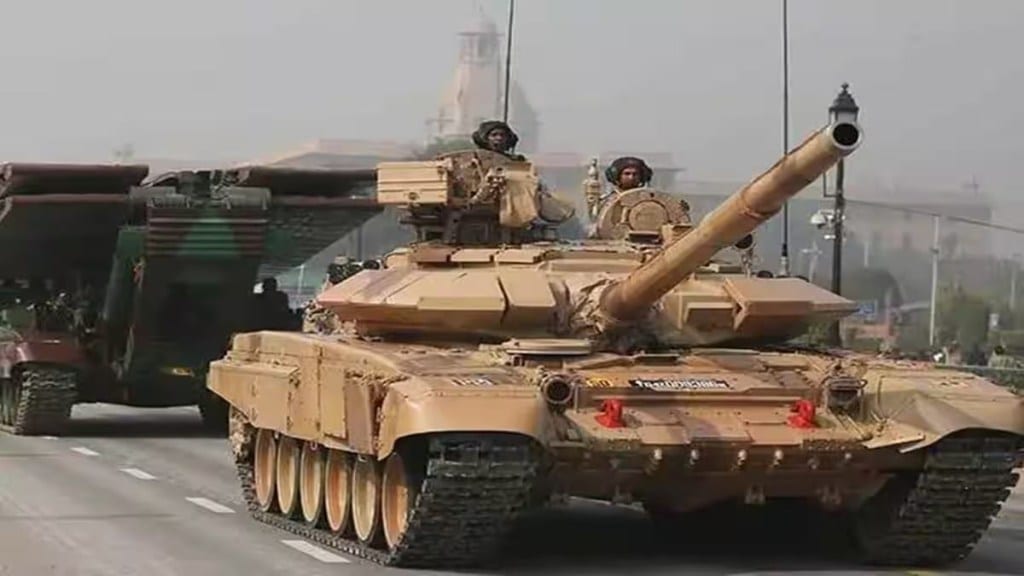By Neeraj Bansal
From the recent landmark deal with the US on high-value knowledge transfer for fighter jet engine production to an expanding domestic manufacturing capacity and increasing exports, the needle for defence manufacturing is finally moving, and rapidly at that. In the last fiscal, compounded by the push for indigenisation, India has surpassed $12 billion in defence production and made $1.94 billion of defence exports—the best showing so far on both parameters, according to data from the ministry of defence.
From expanding the FDI limit under the automatic route to increasing the defence capital procurement budget earmarked for the domestic industry to 75%, the Union government has introduced many reformatory changes. While this will reduce reliance on imports in the mid- to long-term, India is also entering into major defence agreements—such as the BrahMos missiles deal with the Philippines and the $250-million arms deal with Armenia—to further push locally manufactured commodities on the global stage. The country is also on the cusp of a technological revolution, providing cutting-edge solutions to match global demand. Recently, a defence electronics company bagged exports contracts for communication equipment, electronic assemblies and micro modules fromFrance, Israel and the US. This underlines India’s growing strength of catering to the markets of global powerhouses.
What can India do to further indigenisation and ramp up exports? When it comes to defence, self-reliance is important, which, apart from protecting national security, is key to reducing imports and increasing share in global defence markets. To achieve this, India must build on the current momentum on developing domestic manufacturing.
The recent increase in investments will bolster India’s R&D ecosystem, much like the strategies followed by countries exporting high-value commodities. For instance, budgetary allocations to the DRDO have been increasing consistently since the past few years. Additionally, schemes, such as Innovations for Defence Excellence and Defence Testing Infrastructure Scheme, are also being upgraded. While the foundation has been laid, India can continue expanding its technological capabilities. For instance, to boost drone manufacturing, while the liberalisation of regulations and the PLI scheme have proven beneficial, further support can be provided by expanding the current outlay of the PLI scheme, enabling industries to deploy higher capital towards R&D. Similar incentivisation of industries developing medium- and high-range military technology can be implemented.
The past few years have seen India scaling up its infrastructural capabilities. For instance, under previous budgets, the capital outlay pertaining to the modernisation of the defence services has continuously increased—57% since FY2019—catalysing the defence manufacturing industry. While the groundwork has been established for a rapid increase in India’s output generation capacity, further thrust can be provided. For instance, the government can encourage a greater participation of the private sector in defence production, which, according to the defence ministry, currently stands at roughly 21%. While initiatives such as the defence offset policy are attracting private players, further enhancing private sector participation can ensure higher output generation and increase its percentage share in exports, which is currently around 70%. Additionally, India can also focus on developing a base for high-end component manufacturing, required for manufacturing military-grade commodities. This can reduce India’s import dependence and set the stage for manufacturing full-fledged defence systems—such as tanks, fighter aircrafts, navy vessels and artillery systems—to further boost exports.
According to the Stockholm International Peace Research Institute, amidst rising geopolitical disruptions, global military expenditure grew by 3.7% in 2022, and reached an all-time high of more than $2 trillion. With traditional players strategising to increase their supply in developing markets, India can leverage its position as a diplomatically sound and a politically stable nation to negotiate and capitalise on this market opportunity. While recent efforts—such as resolving procedural complications and issuing Open General Export Licenses—are facilitating export-linked activities, India can continue expanding its horizons. Besides focusing on high-value technological transformations, the country can continue expanding its presence in the markets of Southeast Asia, Africa and the Middle East, which are looking for dependable and affordable trading options. For instance, as per estimates from MP-IDSA, the military expenditure of Southeast Asian countries has increased by 36% in the last decade. Similarly, according to SIPRI, Middle Eastern countries spent 3.9% of their GDP in 2022 on defence. Given this, India has an opportunity to strengthen its global presence and simultaneously enhance its ties with friendly countries. To attract fresh demand, India can also ensure timely follow-up on its export contracts, provide end-to-end support and assure zero lapses in product reliability. Increasing exports of low-end technology commodities can help in creating a strong base before entering the extremely competitive high-value arms market.
With a changing global landscape and supply chain diversifications, India can establish itself as a major exporting hub and achieve the 2025 target of $5 billion target in defence exports by following a dynamic and competitive strategy in building higher-value affordable and reliable defence systems and breaking through more markets.
The author is Co-head & COO , India Global, KPMG in India
Views are personal

